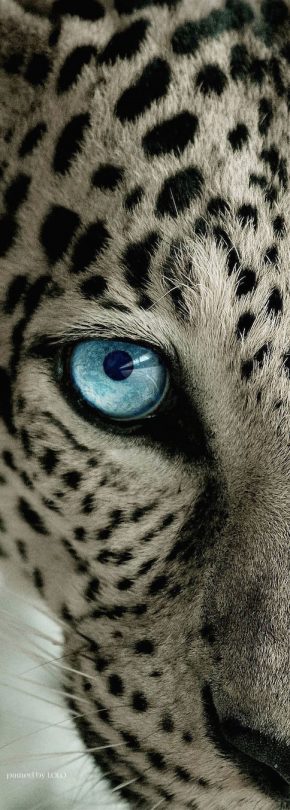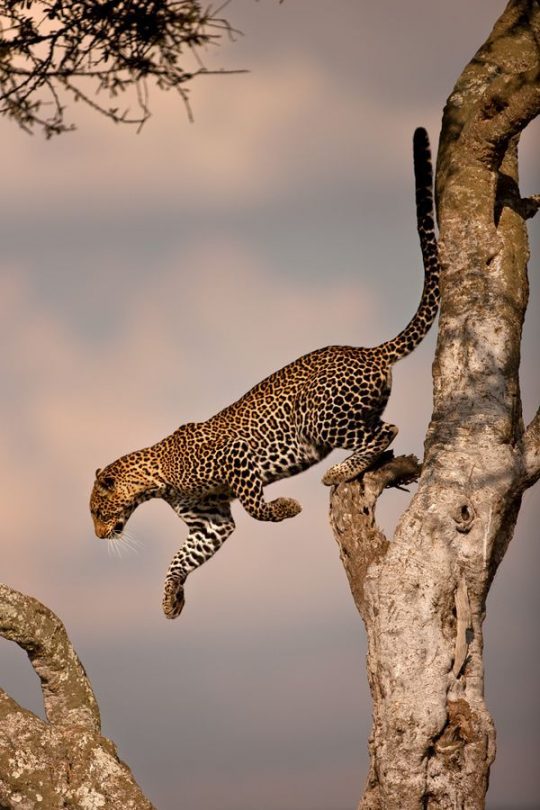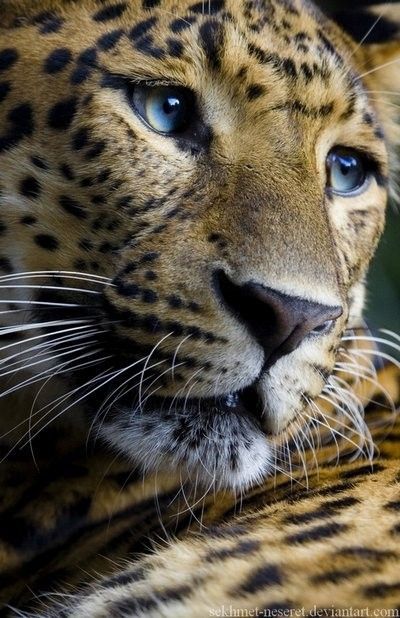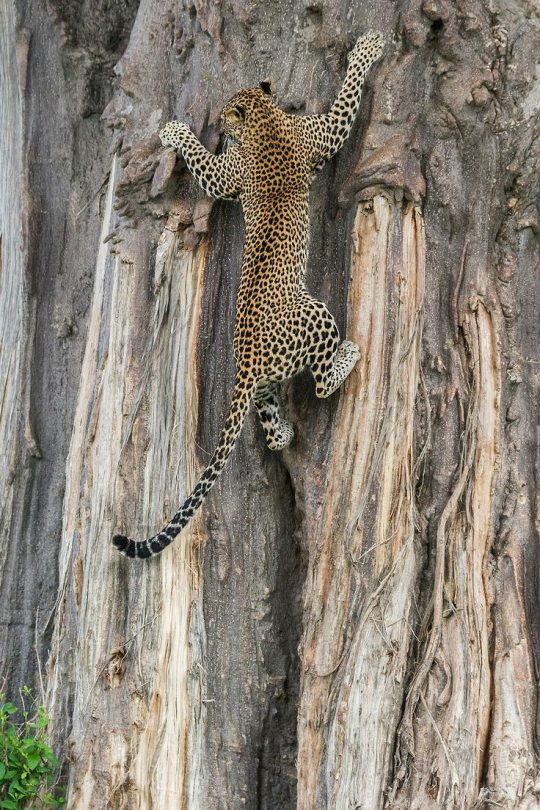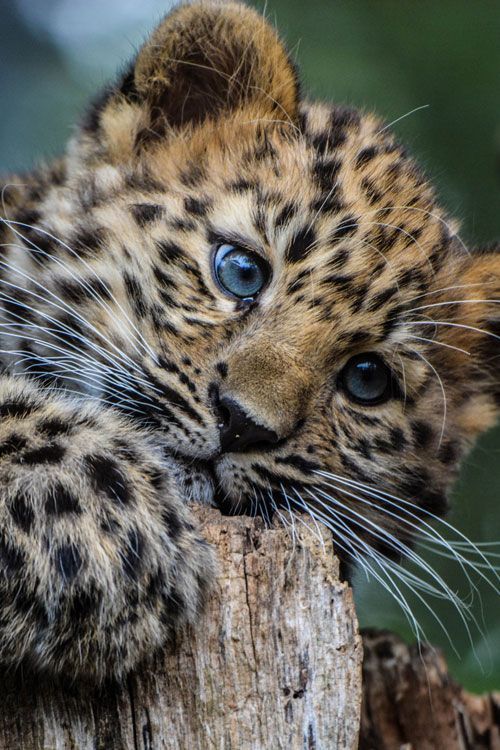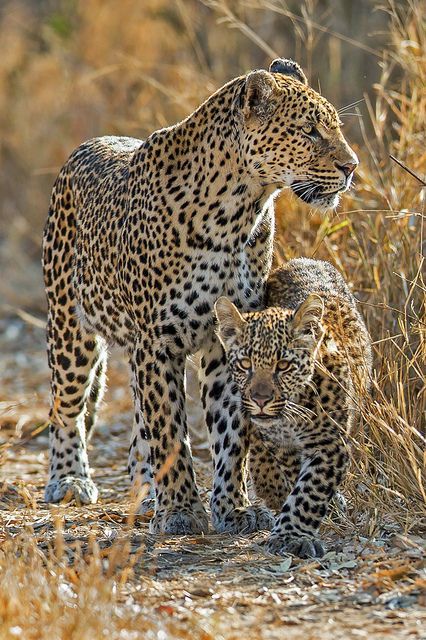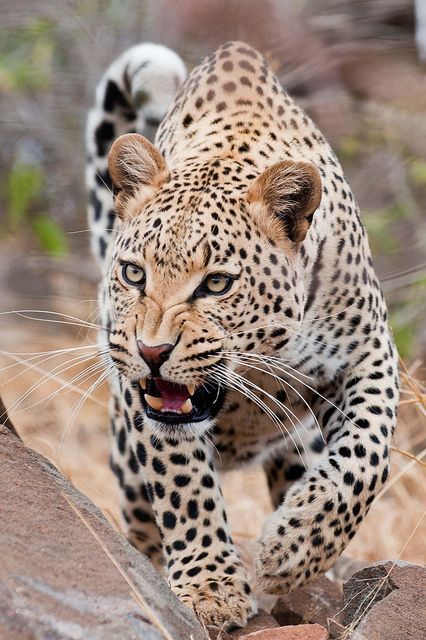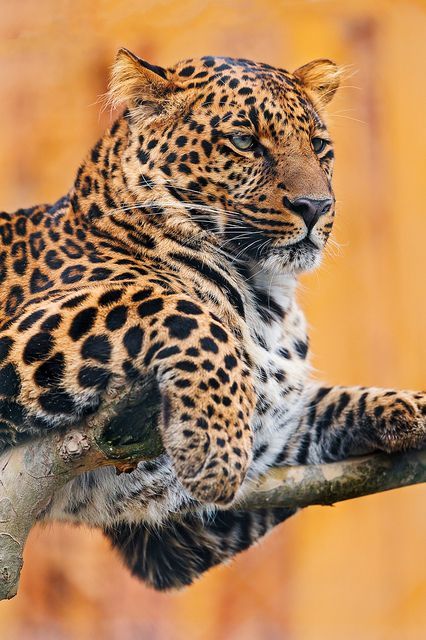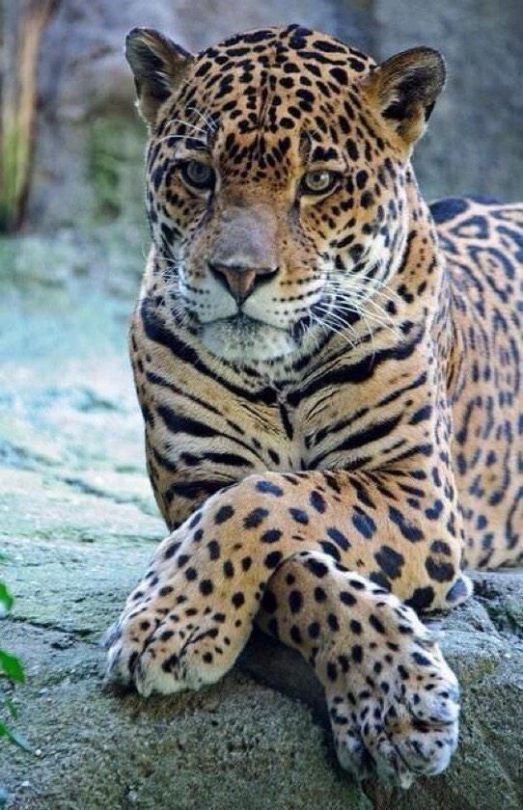L-L-L-LEOPARDS TIME!!!
The leopard /ˈlɛpərd/ (Panthera pardus) is one of the five “big cats” in the genus Panthera. It is a member of the Felidae familywith a wide range in some parts of sub-Saharan Africa, West Asia, the Middle East, South and Southeast Asia to Siberia.[2]
Compared to other members of the Felidae, the leopard has relatively short legs and a long body with a large skull. It is similar in appearance to the jaguar, but is smaller and more lightly built. Its fur is marked with rosettes similar to those of the jaguar, but the leopard’s rosettes are smaller and more densely packed, and do not usually have central spots as the jaguars do. Both leopards and jaguars that are melanistic are known as black panthers.
The leopard’s success in the wild is due to its well camouflaged fur, its opportunistic hunting behavior, broad diet and strength to move heavy carcass into trees, its ability to adapt to various habitats ranging from rainforest, steppe to arid and montaneareas and to run at speeds up to 58 kilometres per hour (36 mph).[3]
It is listed as Near Threatened on the IUCN Red List because leopard populations are declining in large parts of their range. They are threatened by habitat loss and pest control. Their habitats are fragmented and they are illegally hunted so that their pelts may be sold in wildlife trade for medicinal practices and decoration.[4] They have been extirpated in Hong Kong,Singapore, Kuwait, Syria, Libya, Tunisia and most likely Morocco.[1]

